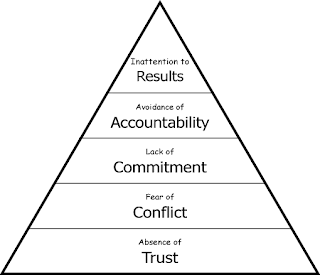Happy 2016!
As is my annual tradition, I will start the new year out
with a reminder of my advice from an article I wrote in The Washington Post
a couple of years back: “Set Goals, Not Resolutions.” And also see my full article on The Power of Goals at this link.
If it’s time for you to set those once-a-year resolutions
that you know will fade by March, then this article is not for you.
But if you are ready to make a long-term commitment to
achieving higher levels of performance and having more satisfaction in life,
then consider getting serious about goal-setting:
*Set goals as outcomes – on what you really want, not the
activities that may lead toward them.
*Make sure that all your goals are SMRT: Specific, Measurable, Relevant, Time-Bound
*Use the right “A” in your SMART goal formula. All goals need to be SMRT. But to be SMART you need to pick the “A” that
is right for your situation. Here are your options:
1. Attainable Goals,
which you have an 80+% chance of accomplishing, are good if failing will have
many negative consequences. Attainable
goals are good to build some momentum with easy wins, or to learn more about
new environments, or if you are concerned about getting discouraged.
2. Aggressive Goals,
which you have a 35% chance of accomplishing, will improve your
performance. Research shows that the
more difficult the goal, the higher the level of performance.* If you feel like you have a good system and
you want to maximize performance of it, then this method will help you do it.
3. Almost Impossible
Stretch Goals, which you have a 1% chance of accomplishing, will require you to
design innovative ways of going about accomplishing your goal. “Working harder” on the same process won’t do
it. You have an opportunity for
breakthrough performance with Almost Impossible Stretch Goals.
*Celebrate Noble Failure.
If you are inspired to pursue a goal and you go for it, but you don’t
make it all the way, then appreciate the progress you have made and appreciate
that you worked hard at something you really cared about. This mind-set will bring you more long-term
success than letting the fear of failure keep you from doing what truly
inspires you.
I provide more extensive detail on goal setting in this article, The Power of Goals. If you use these
principles and apply them to your personal and work life then I promise you
much higher levels of performance, fulfillment, and satisfaction. But it only works if you take it on as a
true, committed discipline – not a once a year fad. Good luck with all of your goals!
*A Theory of Goal Setting & Task Performance, by Edwin
Locke and Gary Latham
For
more ideas on how you can lead breakthroughs in your organization, follow this
blog and check out my web site at www.SheehanNonprofitConsulting.com You will find free resources you can
download, including a Breakthrough Strategy Workbook that you can download at
no cost. You can also check out my book,
Mission Impact: Breakthrough Strategies
for Nonprofits, and buy it if you are interested. And you can follow Sheehan Nonprofit
Consulting on Facebook.


















